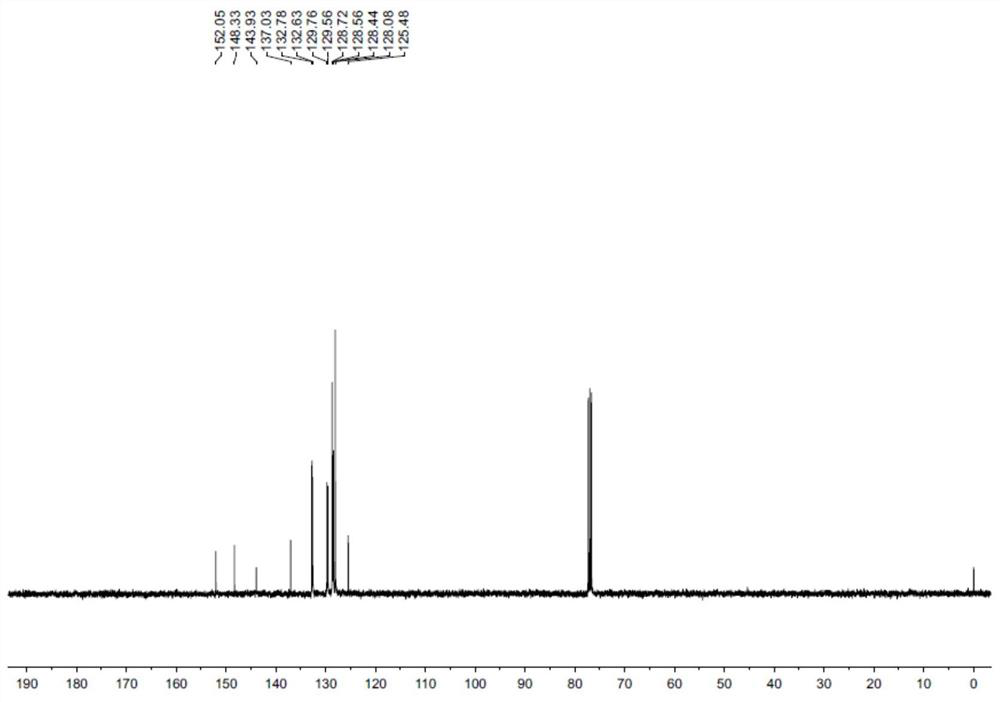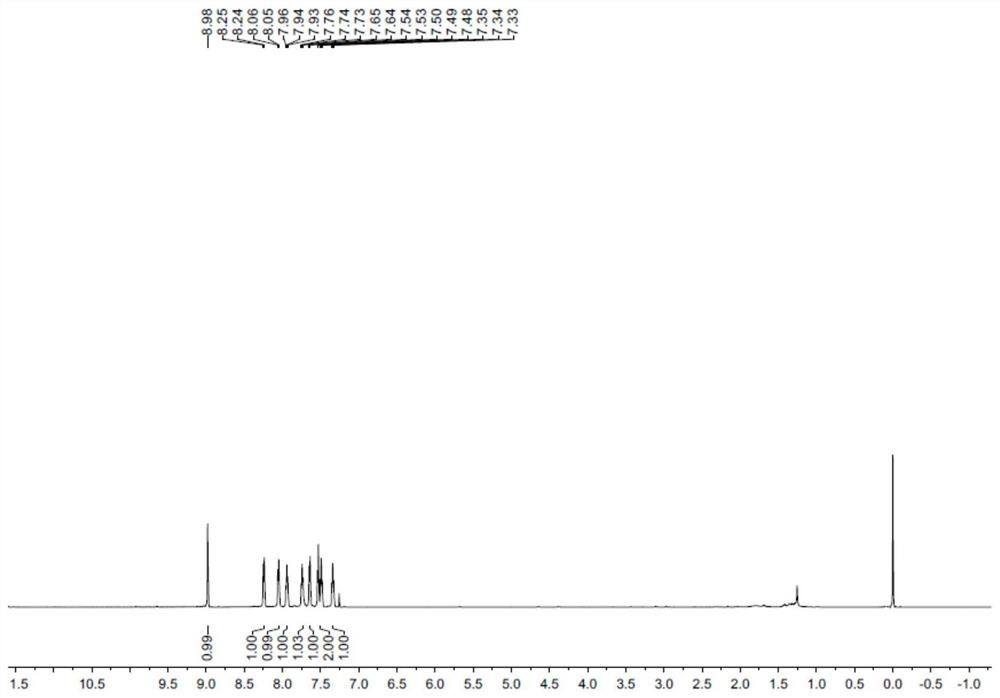Synthetic Technology of 3-Nitroquinoline Derivatives
A synthesis process and nitroquinoline technology, applied in directions such as organic chemistry, can solve the problems of complicated post-processing, cumbersome preparation, few synthesis methods, etc., and achieve the effects of simple post-processing, high reaction yield, and low-cost catalyst.
- Summary
- Abstract
- Description
- Claims
- Application Information
AI Technical Summary
Problems solved by technology
Method used
Image
Examples
Embodiment 1
[0036] The specific steps are: add nitrostyrene (1mmol), 2-azidobenzaldehyde (1.5mmol), CuI (0.01mmol), DMF (2mL) to a round bottom flask (50mL), and react with magnetic stirring at 110°C After 8 hours, after dissolving with ethyl acetate, the organic layer was washed with saturated brine, dried over anhydrous sodium sulfate, and the solvent was evaporated under reduced pressure to obtain the crude product, which was prepared with ethyl acetate / petroleum ether=1:10 ( V / V) is the eluent and subjected to column separation and purification to obtain the desired product 2-phenyl-3-nitroquinoline as a yellow solid with a yield of 85%.
[0037] like figure 1 and figure 2 , the proton nuclear magnetic spectrum result of gained product is: 1 H NMR (600MHz, DMSO-d 6 ):δ8.60(s,1H),8.20(d,J=8.4Hz,1H),7.90(d,J=8.4Hz,1H),7.86(t,J=7.8Hz,1H),7.63(t ,J=7.2Hz,1H),7.58(d,J=7.8Hz,2H),7.30(d,J=7.8Hz,2H),2.42(s,3H). 13 C NMR (100MHz, CDCl 3 , ppm) δ152.1, 148.3, 143.9, 137.0, 132.8, 132.6, ...
Embodiment 2
[0039] The specific steps are: add nitro-o-bromostyrene (1mmol), 2-azidobenzaldehyde (1.5mmol), CuI (0.01mmol), toluene (2mL) to a round bottom flask (50mL), and magnetically After stirring and reacting for 12 hours, dissolve it with ethyl acetate, wash the organic layer with saturated brine, dry over anhydrous sodium sulfate, evaporate the solvent under reduced pressure to obtain the crude product, and use ethyl acetate / petroleum ether=1 :10 (V / V) is the eluent and carries out column separation and purification to obtain the desired product 2-(2-bromophenyl)-3-nitroquinoline as a yellow solid with a yield of 78%.
[0040] like image 3 and Figure 4 , the proton nuclear magnetic spectrum result of gained product is: 1 H NMR (600MHz, CDCl 3 , ppm) δ8.98(s, 1H), 8.25(d, J=8.4Hz, 1H), 8.06(d, J=7.8Hz, 1H), 7.95(t, J=7.2Hz, 1H), 7.74( t,J=7.2Hz,1H),7.65(d,J=7.8Hz,1H),7.59-7.45(m,2H),7.34(t,J=7.2Hz,1H). 13 C NMR (100MHz, CDCl 3 , ppm) δ152.2, 148.5, 143.0, 139.4, 133.4, 133....
Embodiment 3
[0042] The specific steps are: add nitrostyrene (1mmol), 2-azido-4-fluorobenzaldehyde (1.5mmol), Cu 2 O (0.01mmol), DMSO (2mL), magnetically stirred at 100°C for 15 hours, dissolved in ethyl acetate, washed the organic layer with saturated brine, dried over anhydrous sodium sulfate, and distilled off the solvent under reduced pressure. Get the crude product, the crude product uses ethyl acetate / petroleum ether=1:15 (V / V) as the eluent to carry out column separation and purification to obtain the desired product 2-phenyl-3-nitro-7-fluoroquine phenoline, the product is a yellow solid, and the yield is 72%.
[0043] Such as Figure 5 with Image 6 , the proton nuclear magnetic spectrum result of gained product is: 1 H NMR (600MHz, CDCl 3 ,ppm)δ8.70(s,1H),8.03-7.97(m,1H),7.86(d,J=9.6Hz,1H),7.65(s,2H),7.48-7.51(m,4H). 13 C NMR (150MHz, CDCl 3 , ppm) δ166.0, 164.3, 153.3, 149.6 (d, J = 13.4Hz), 143.5, 136.7, 132.7, 130.8 (d, J = 10.4Hz), 129.8, 128.8, 122.5, 119.3 (d, J = 25.9...
PUM
 Login to View More
Login to View More Abstract
Description
Claims
Application Information
 Login to View More
Login to View More - R&D
- Intellectual Property
- Life Sciences
- Materials
- Tech Scout
- Unparalleled Data Quality
- Higher Quality Content
- 60% Fewer Hallucinations
Browse by: Latest US Patents, China's latest patents, Technical Efficacy Thesaurus, Application Domain, Technology Topic, Popular Technical Reports.
© 2025 PatSnap. All rights reserved.Legal|Privacy policy|Modern Slavery Act Transparency Statement|Sitemap|About US| Contact US: help@patsnap.com



